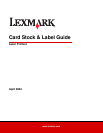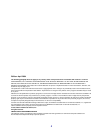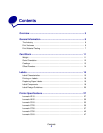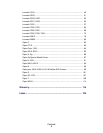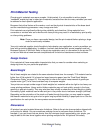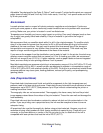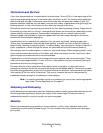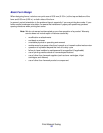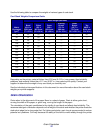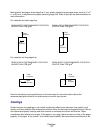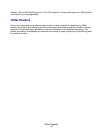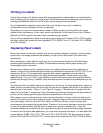
General Information
6
General Information
The Industry
The paper and label industry includes several different types of businesses: manufacturers,
converters, and distributors.
Manufacturers produce the base stock. If the base is for labels, manufacturers may ship it on large
rolls or in a cut-sheet form.
Converters take the base stock and convert it into cut-sheet products. Converters may work from
rolls with or without the adhesive applied, or they may take a base stock and convert it to meet their
customers’ specifications.
The conversion process includes, but is not limited to, cutting the stock to size, perforating the stock,
die-cutting, and applying inks and topcoats. Converters work with their customers to convert the
base material into a cut-sheet product designed for use in laser printers.
Distributors generally are the direct link to the customer.
Distributors may work with different converters, and converters may work with different
manufacturers, as their needs and prices change. Most businesses follow accepted industry
conventions, but specifications, standards, formulations, and processes may vary with time or with
different companies.
Note: Labels or papers that performed satisfactorily in the past may suddenly create
printing problems because of a change in material or process.
Some large businesses perform all three functions, from manufacturing to distribution. These
companies may offer greater expertise and product consistency than companies that concentrate on
one facet of the process.
Print Volumes
Printing numerous sheets of card stock or labels in a short period of time can create printing
problems. Exclusive printing of labels, for example, may result in more frequent service calls. Proper
printer maintenance helps alleviate these problems. (Look under “Maintenance Procedures” in the
index for specific information about maintaining your printer.)



